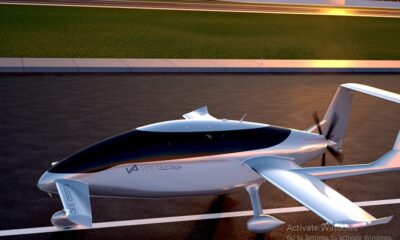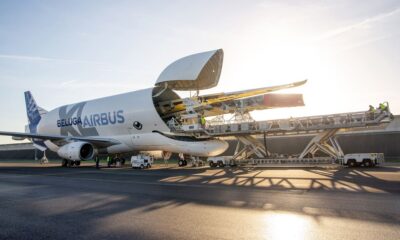Space
Historic Milestone: SpaceX Conducts First-Ever Commercial Spacewalk

In a groundbreaking moment for space exploration, SpaceX’s Polaris Dawn mission made history by completing the first-ever commercial spacewalk, or extravehicular activity (EVA).
A four-person civilian crew aboard the Dragon spacecraft ventured beyond the confines of their capsule, stepping into the vastness of space at an altitude of 732.2 kilometers above Earth. This remarkable feat marks the first time non-government astronauts have successfully conducted a spacewalk, pushing the boundaries of commercial spaceflight.
The spacewalk was a significant milestone in human space exploration, with the crew venturing farther into space than anyone has since NASA’s Apollo missions, over 50 years ago. After reaching a record altitude, Dragon was lowered to 737 kilometers at its highest point to initiate the spacewalk.
Commander Jared Isaacman, the mission leader, was the first to step outside, tethered to the spacecraft as he experienced the raw beauty of space, remarking, “This sure looks like a perfect world,” as he gazed down at Earth.
Isaacman spent around 10 to 15 minutes in the vacuum of space, maneuvering while tethered to Dragon and waving back at his crew. Shortly after, mission specialist Sarah Gillis, also a civilian astronaut, followed Isaacman out of the capsule. At that time, Dragon was traveling at a speed of 25,806 kilometers per hour, 610 kilometers above Earth. Both astronauts successfully returned to Dragon after completing a series of movements and observations in space.
In addition to making history, the crew conducted vital scientific experiments and installed new technology while outside the spacecraft. This spacewalk not only tested the capabilities of civilians in space but also allowed SpaceX to trial new systems and suits. The crew used a specialized hatch structure called “Skywalker,” featuring handholds and footholds for added stability and mobility.
This setup differs from the larger external structures of the International Space Station (ISS), which typically offers more anchoring points for astronauts. Beyond its historical significance, this spacewalk represents a key moment in the evolution of space travel.
It provides a glimpse into SpaceX’s future ambitions of developing more affordable and flexible spacesuits, designed for a broader range of astronauts. By advancing these technologies, SpaceX is paving the way for more accessible space exploration, potentially opening the door for civilians and private missions in the years to come.

-

 Aerospace1 year ago
Aerospace1 year agoVoltAero Performs the World’s First Flight of an Electric-Hybrid Aircraft
-

 Aerospace1 year ago
Aerospace1 year agoFirst Glimpse of Hungary’s KC-390 Aircraft by Embraer
-

 Aerospace1 year ago
Aerospace1 year agoThe Art and Science of Crafting Airbus A350 Wings
-

 Aerospace1 year ago
Aerospace1 year agoS-92 Helicopter: A Journey from Ocean Rescues to Sustainable Aviation Fuel Innovation
-

 Aerospace1 year ago
Aerospace1 year agoAirbus partners with DG Fuels to foster sustainable aviation fuel production in the United States
-

 Aerospace1 year ago
Aerospace1 year agoGKN and Pratt & Whitney collaborate to develop EWIS for hybrid demonstrator
-
Uncategorized12 months ago
Difference between NASA and Space-x
-

 Aerospace2 months ago
Aerospace2 months agoExperts Predict Boeing’s Starliner Could Collide with International Space Station


